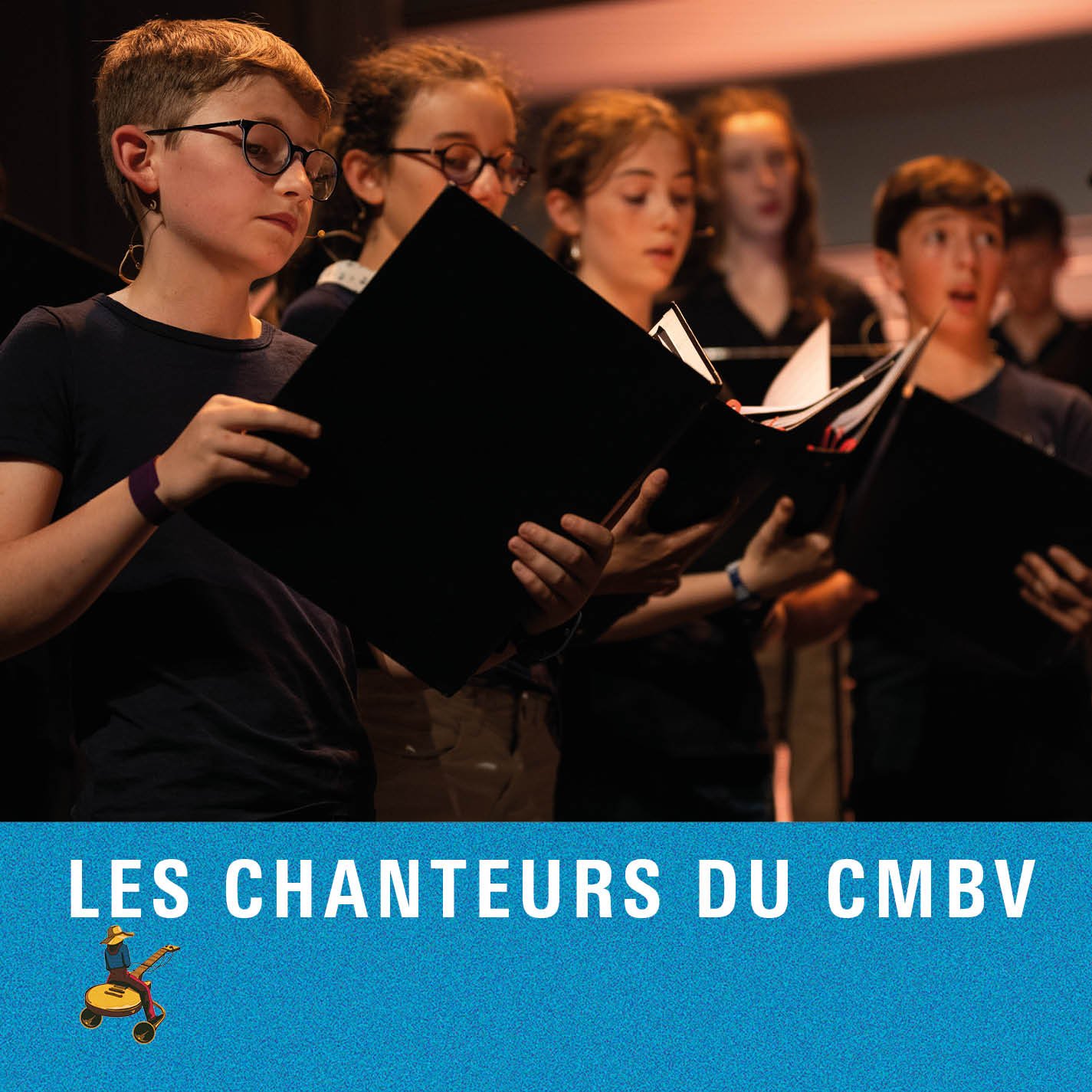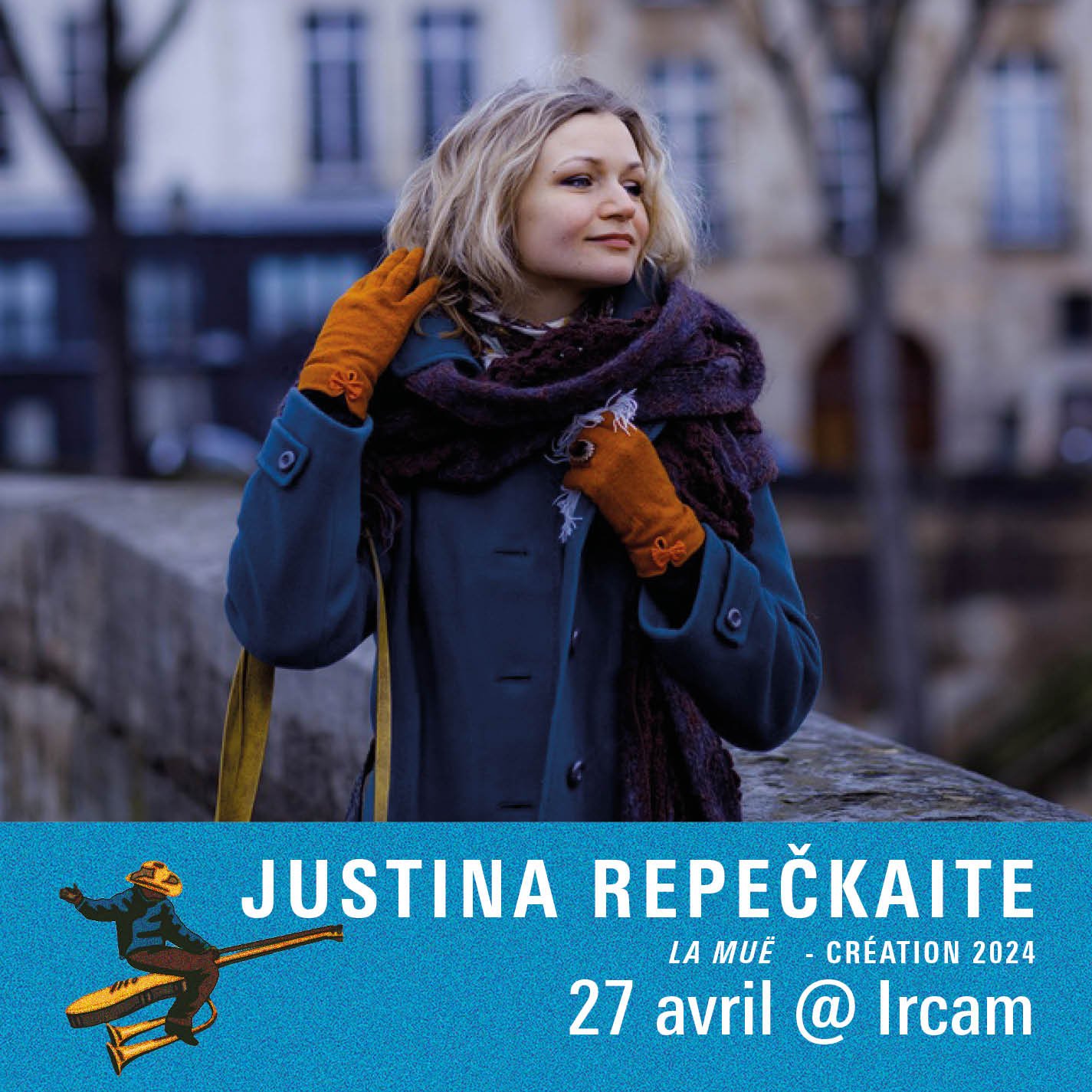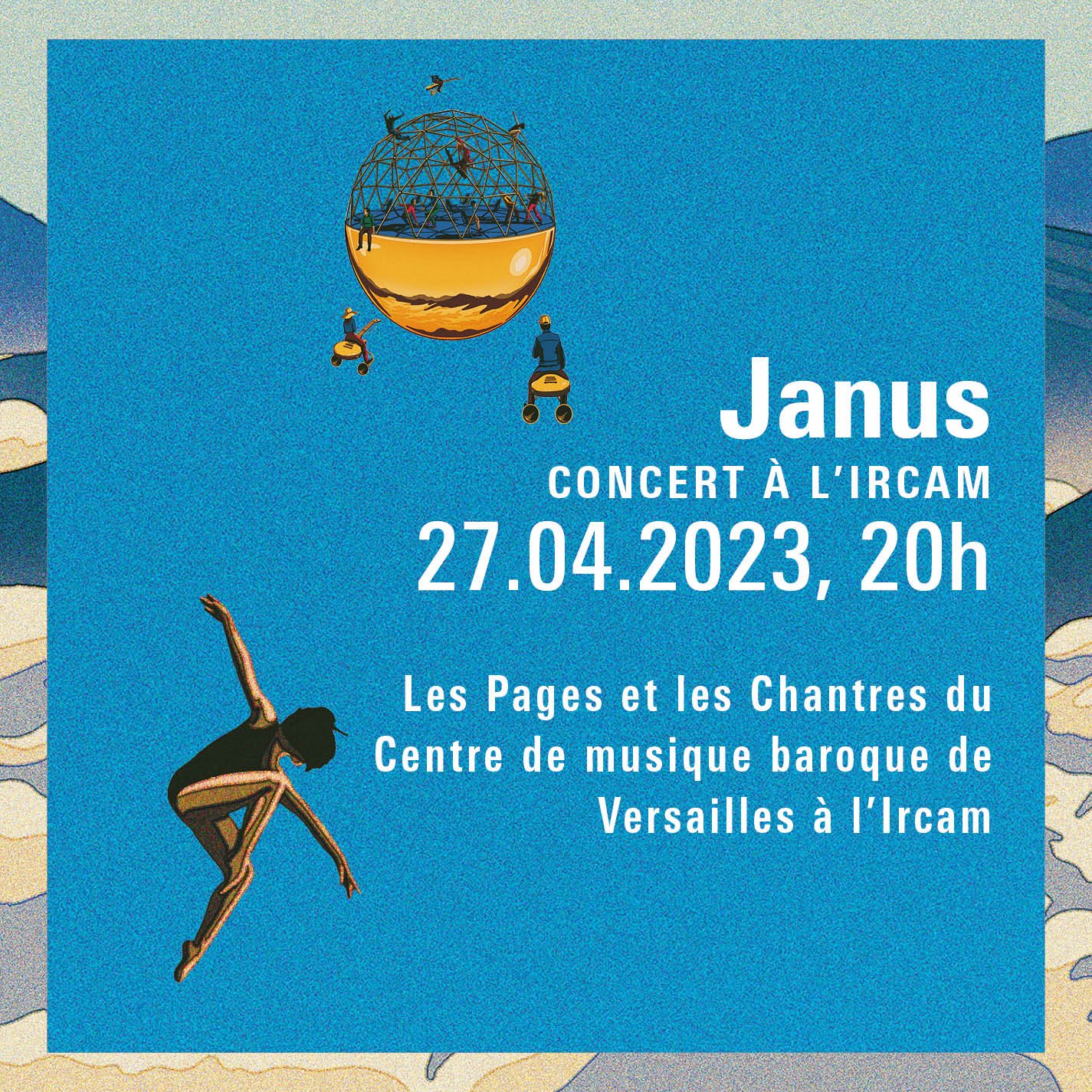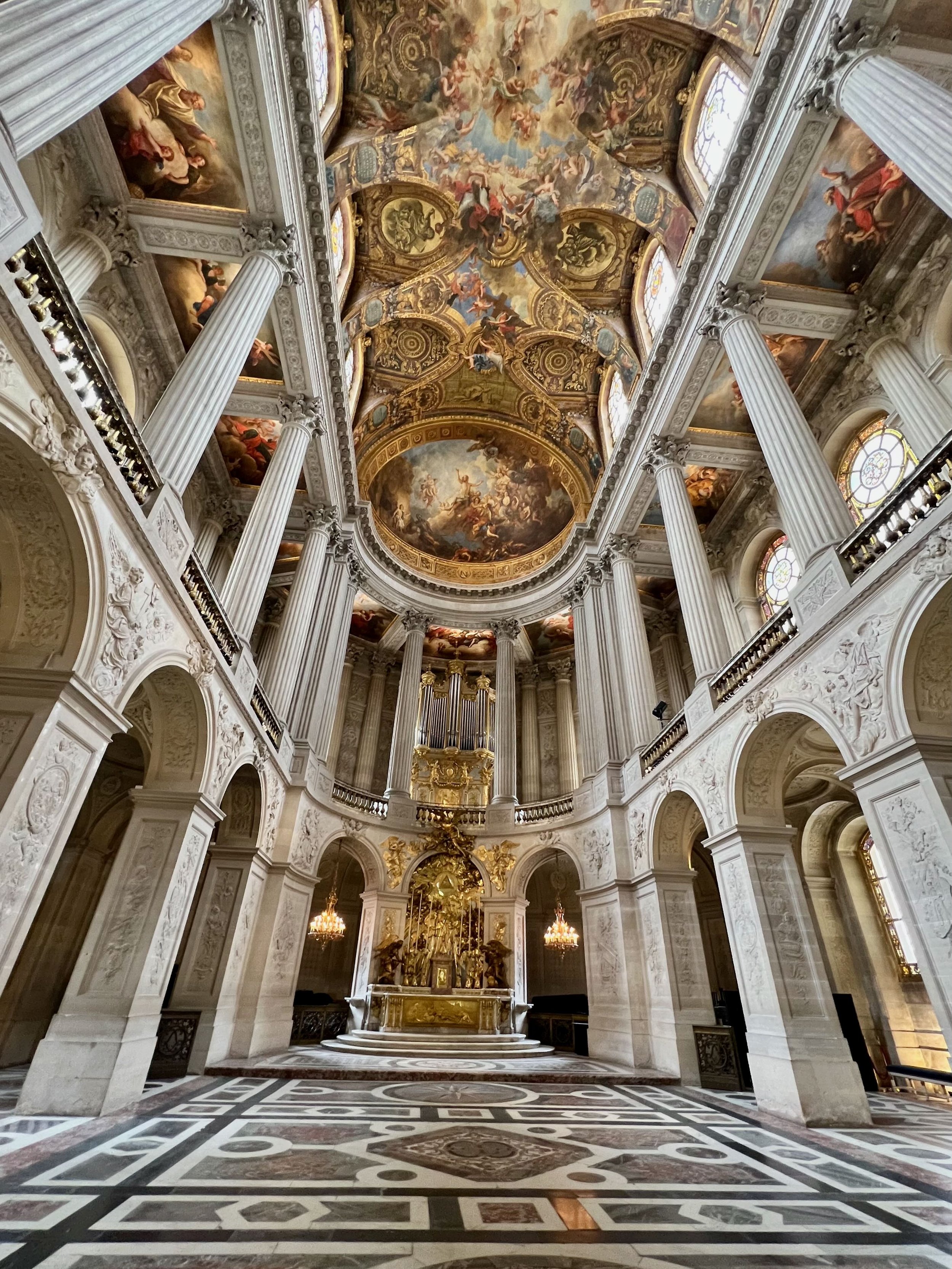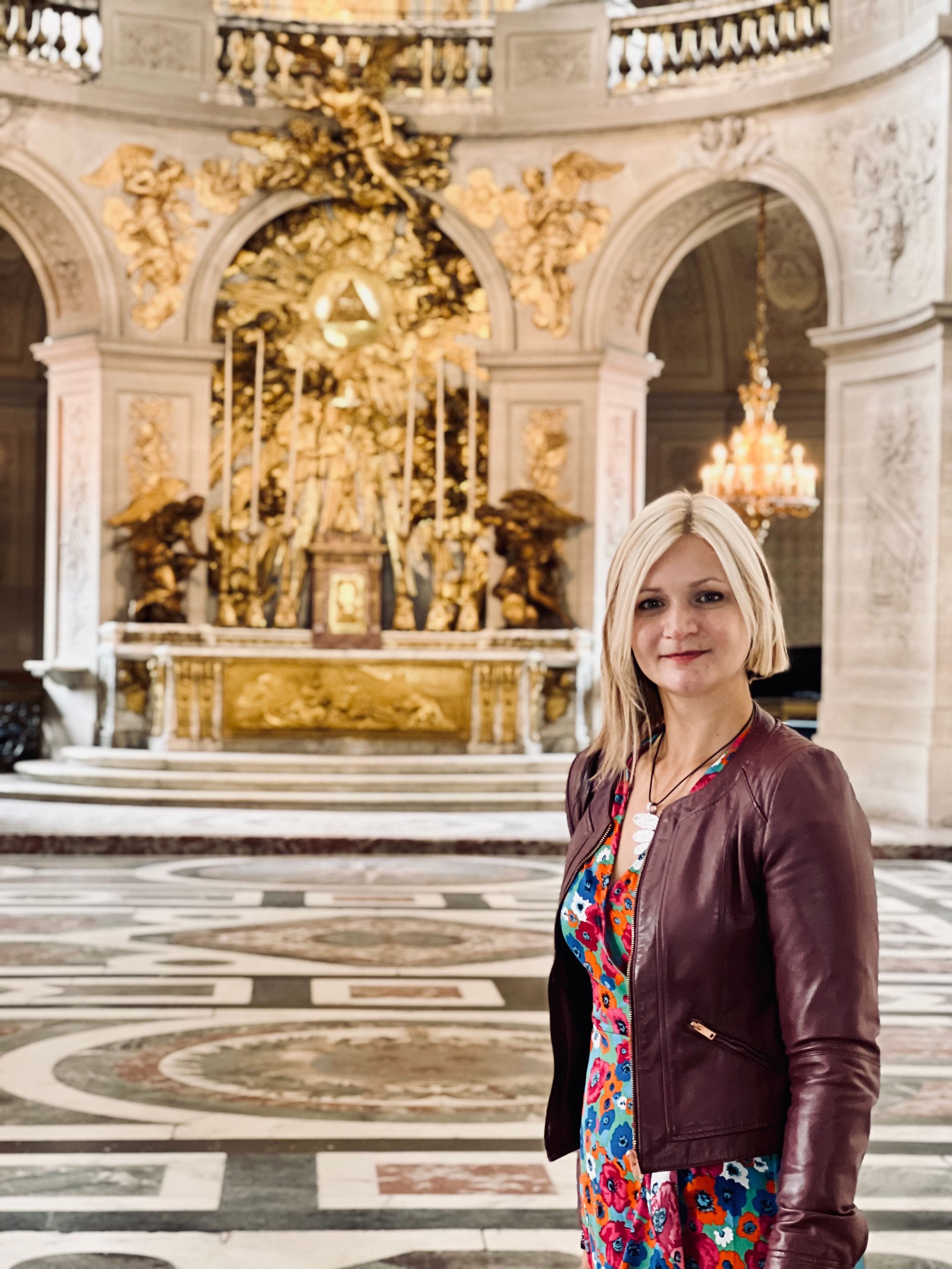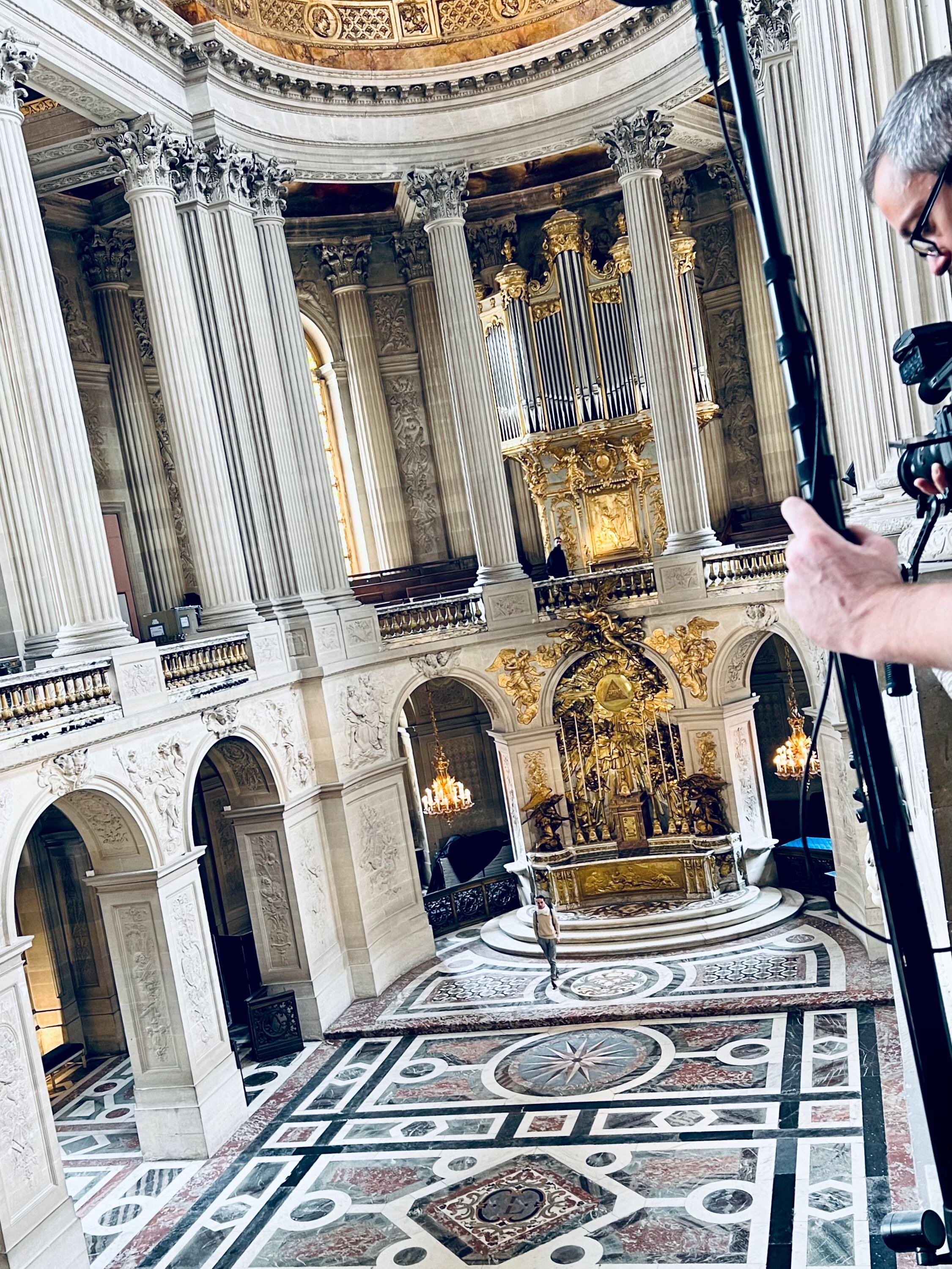Janus project at IRCAM
Justina Repečkaitė at Ircam, 2024.
Justina Repečkaitė’s composition La muë for serpent, children's choir and electronics will premiere on the 27th of April, 2024 at salle Espro, Ircam. Co-commissioned by IRCAM - Centre Pompidou and the Center of Baroque Music Versailles - CMBV, Justina started writing the piece while staying at Schloss Wiepersdorf. La muë uses the text of Samuel Auguste Tissot - Essai sur la muë de la voix (1754) - an essay on children’s voice change. In July, 2023 Justina started working at IRCAM with the computer music designer (RIM - réalisateur en informatique musicale) João Svidzinski. They recorded Patrick Wibart playing the serpent, an ancient low pitched early brass-instrument, exploring not only a traditional use of the instrument but also a technique of simultaneous singing and playing the instrument, omnipresent in the composition La muë.
Program Note
As the title in French suggests, "Essai sur la muë de la voix" (1754) by Samuel Auguste Tissot discusses the voice changing process, explaining this phenomenon, according to the knowledge of the time, as a change in thickness in the vocal cords. The concept of hormones was not yet known at that time, and puberty, the transformation of the body, was explained by the "birth of love". In the composition, the repetition of key words from Tissot's text - voix, charme, l’amour, l’art, l’âme, la mue - reveals timbral variations through the filtering of the "slowed down" text - sustained notes are sung on both vowels and consonants.
The serpent, which in France, accompanied children's choirs in churches until the 19th century, adds additional symbolic significance. At the time, the most talented children, whose voices were changing and they had to leave the choir, would learn to play the serpent, the instrument often likened to the human voice. The serpent performer, Patrick Wibartd, uses a technique of simultaneous singing and playing the instrument, thus obtaining unprecedented sounds that reflect the concept of the composition: the mutation of the child’s voice towards the serpent. The last part of the piece also makes allussion to ecdysis, the molting of the snake (la mue du serpent in French) skin itself, the moment when the animal sheds its skin, which will then regenerate, in order to continue its growth.
The electronics use the formant analyses of a child’s voice, specially conducted for the project, to generate, among other things, the harmonies that accompany the choir. The analysed sounds of the serpent, which also inspire harmony in the electronics, are the intervals produced by the musician combining simultaneous singing and playing the instrument, as well as the particular technique of the didgeridoo when the musician varies the harmonics by changing vowels and produces a throat-singing effect. The HOA system (for High Order Ambisonics) which simulates the acoustics of the Royal Chapel of Versailles specially designed by IRCAM for the Janus project, serves as the quintessential effect. Thus, the unique reverberation of the location profoundly transforms the electronics part and allows for the exploration of the illusions that arise in this unique acoustics.
Patrick Wibart is called the “Paganini of the serpent” by the French newspaper Le Monde. Justina and Patrick met at Conservatoire de Paris, in the medieval improvisation class taught by Raphaël Picazos. Since then Patrick’s saxhorn quartet Opus 333, premiered her piece Encierro commissioned by Radio France.
The Janus program — a new, innovative partnership between the CMBV and IRCAM —combines the French baroque repertoire and new works of 4 young European composers: the French composer Adrien Trybucki (1993), the Spanish composer Ariadna Alsina Tarrés (1986), the Lithuanian composer Justina Repečkaitė (1989) and the Serbian composer Jug Marković (1987) who draw inspiration from French Baroque music to compose new works.
Since 2022, thanks to CMBV initiative, Janus composers got to know singers' voices, learned about the Baroque singing tradition and ancient instruments, and visited the Royal Chapel of the Palace of Versailles.
Pictures from Hemisphere son article: Les Pages and Fabien Armengaud.
For the general public: documentary resources
To be released in 2024-2025
Publication of a collection of Janus CDs: publication of the recordings of the new works
Diffusion of a video documentary in the wings of the project, up close to the young artists
Season 2023-2024
27th of April 2024 | IRCAM , Espace de projection
Fabien Armengaud musical direction
Les Pages et les Chantres du Centre de musique baroque de Versailles
João Svidzinski, Johann Philippe IRCAM electronics
Premiere of new works by Jug Marković and Justina Repečkaitė
Co-commissionned by IRCAM - Centre Pompidou and the CMBV
Alongside the baroque repertoire works that inspired the two creations.
PRESS
An interview of Justina Repečkaitė and Jug Marković The Moulting of Music conducted by Jérémie Szpirglas.
Read more on Janus project from IRCAM website.
Read an interview At Ircam, Janus unites baroque and creation with Fabien Armengaud and Clément Buonomo, the artistic and musical director and the assistant director of the Maîtrise du CMBV at Hemisphere Son (Suzanne Gervais).
“<…> Justina Repečkaitė, wants to write about the moulting of children’s voices, an issue that touches us every year! How were molted voices used at the time in choir schools and chapels, and what became of those known as molted tops? So she’s working on a piece that will feature an interplay of textures between the different tessituras of the Maîtrise’s voices.”
A link to the Radio France podcast on the projects JANUS.










